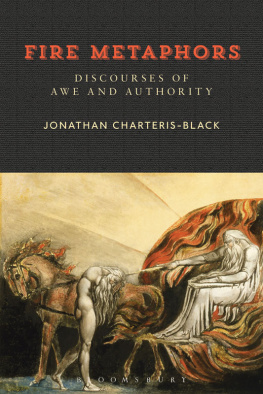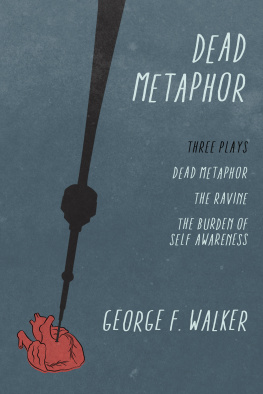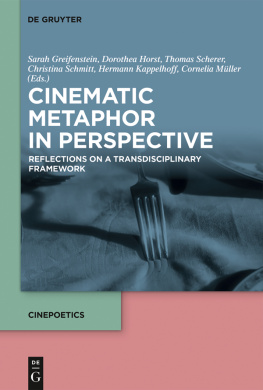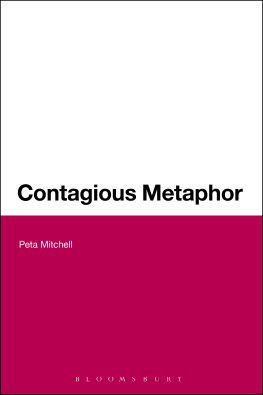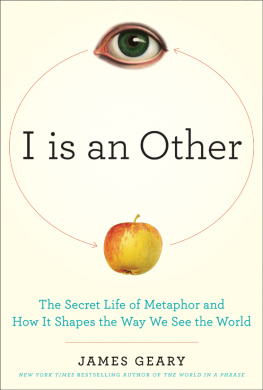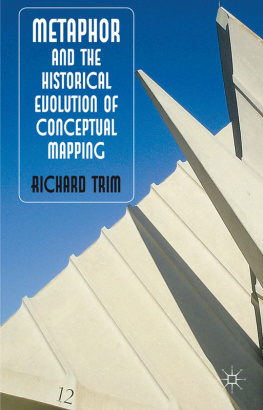Reality is a clich from which we escape by metaphor.
Foreword
Why I Is an other
I n later life, Arthur Rimbaud was an anarchist, businessman, arms dealer, financier, and explorer. But as a teenager, all he wanted to be was a poet. In May 1871, the sixteen-year-old Rimbaud wrote two letters, one to Georges Izambard, his former teacher, and one to Paul Demeny, a publisher he was keen to impress.
Rimbaud waited around for Izambard every day, palely loitering outside the school gates, eager to show the young professor his most recent verse. He also peppered Demeny with copies of his work, accompanied by notes in which he effused about his poems and dropped heavy hints that he would not be at all averse to seeing them in print.
In these two missives, known together as the Seer Letters, Rim baud outlined his vision for a new kind of poetry. A Poet makes himself a visionary: perfumes, sounds, colors, thought grappling with thought.
Rimbauds poetic program involved upsetting conventional orders of perception, deranging habitual ways of seeing, hearing, smelling, touching, and tasting, and rearranging them in novel combinations. Fresh, vivid, sometimes shocking images resulted when sense impression jostled sense impression, when thought grappled with thought.
I got used to elementary hallucination, Rimbaud wrote in A Season in Hell. I could very precisely see a mosque instead of a factory, a drum corps of angels, horse carts on the highways of the sky, a drawing room at the bottom of a lake.
To achieve this systematized disorder, Rimbaud believed the poet needed to see similarity in difference and difference in similarity. Things are never just things in themselves; a visionary company of associations, correspondences, semblances always attends them. Everything can be seenand, for Rimbaud, everything should be seenas something else.
Rimbaud summarized his poetic mission, and his working method, in the phrase:
I is an other.
I is an other is more than just the Seer Letters grandest dictum. It is metaphors defining maxim, its secret formula, and its principal equation. Metaphor systematically disorganizes the common sense of thingsjumbling together the abstract with the concrete, the physical with the psychological, the like with the unlikeand reorganizes it into uncommon combinations.
Metaphor is most familiar as the literary device through which we describe one thing in terms of another, as when the author of the Old Testament Song of Songs describes a lovers navel as a round goblet never lacking mixed wine.
Yet metaphor is much, much more than this. Metaphor is not just confined to art and literature but is at work in all fields of human endeavor, from economics and advertising, to politics and business, to science and psychology.
Metaphor conditions our interpretations of the stock market and, through advertising, it surreptitiously infiltrates our purchasing decisions. In the mouths of politicians, metaphor subtly nudges public opinion; in the minds of businesspeople, it spurs creativity and innovation. In science, metaphor is the preferred nomenclature for new theories and new discoveries; in psychology, it is the natural language of human relationships and emotions.
These are just some of the ways metaphor pervades our daily lives and daily minds. But there is no aspect of our experience not molded in some way by metaphors almost imperceptible touch. Once you twig to metaphors modus operandi, youll find its fingerprints on absolutely everything.
Metaphorical thinkingour instinct not just for describing but for comprehending one thing in terms of another, for equating I with an othershapes our view of the world, and is essential to how we communicate, learn, discover, and invent.
Metaphor is a way of thought long before it is a way with words.
Our understanding of metaphor is in the midst of a metamorphosis. For centuries, metaphor has been seen as a kind of cognitive frill, a pleasant but essentially useless embellishment to normal thought. Now, the frill is gone. New research in the social and cognitive sciences makes it increasingly plain that metaphorical thinking influences our attitudes, beliefs, and actions in surprising, hidden, and often oddball ways. Metaphor has finally leapt off the page and landed with a mighty splash right in the middle of our stream of consciousness. The waves rippling out from that impact are only just beginning to reach us.
douard Claparde, a Swiss neurologist and early investigator of memory who died in 1940, studied individuals with brain lesions and other neurological damage that affected their abilities to create new memories and recall old ones. One of his patients was a woman who had no short-term memory whatsoever. She had perfect recollection of the more distant past, including her childhood, but the recent past was a total blank. Unable to form any new memories, this woman saw Claparde every day at his clinic yet had no recollection of ever meeting him. Each time they met, it was as if for the very first time.
Claparde wanted to test whether some part of this womans brain did indeed remember him. So one day he concealed a pin in his hand and, when the woman arrived for her next session, he shook her hand. The woman cried out in pain and withdrew her hand.
The following day, the woman arrived as usual for her appointment and, as usual, professed that she had never seen Claparde before. But when Claparde proffered his hand to shake, she hesitated, fearing another jab. The experiment proved that, on some unconscious level, the woman recalled the physical pain associated with Clapardes handshake. Therefore, Claparde concluded, some vestige of her short-term memory was still at work.
Like Clapardes handshake, metaphor slips a pin into the quotidian. By mixing the foreign with the familiar, the marvelous with the mundane, metaphor makes the world sting and tingle. Though we encounter metaphor every day, we typically fail to recognize it. Its influence is profound but takes place mostly outside our conscious awareness. Yet once metaphor has us in its grasp, it never lets us go, and we can never forget it.
Metaphor and Thought
All Shook Up
M etaphor lives a secret life all around us. We utter about one metaphor for every ten to twenty-five words.
Sound like a lot? Too many, perhaps? A quick look at some representative language samples shows just how popular metaphor is. Take this Australian weather forecast, for instance (the metaphors are in italics):
Perth is in the grip of a heat wave with temperatures set to soar to 40 degrees Celsius by the end of the week. Australia is no stranger to extreme weather. Melbourne was pummelled with hailstones the size of golf balls on Saturday. Long term, droughts, bushfires, and floods have all plagued large swathes of Queensland, New South Wales and Victoria.
Thats five metaphors in an excerpt of fifty-eight words, or about one metaphorical phrase for every eleven words. These are all classic metaphors, too, in which one thing is described in terms of another: hailstones are described in terms of golf balls; extreme weather conditions are described in terms of biblical plagues.
Still, maybe we innately resort to metaphor when talking about meteorology. Would the metaphor-per-words ratio still hold for a presumably more exact science, like economics? Here are the headline and first line from a by no means atypical story about the economy, in this case Great Britains:



